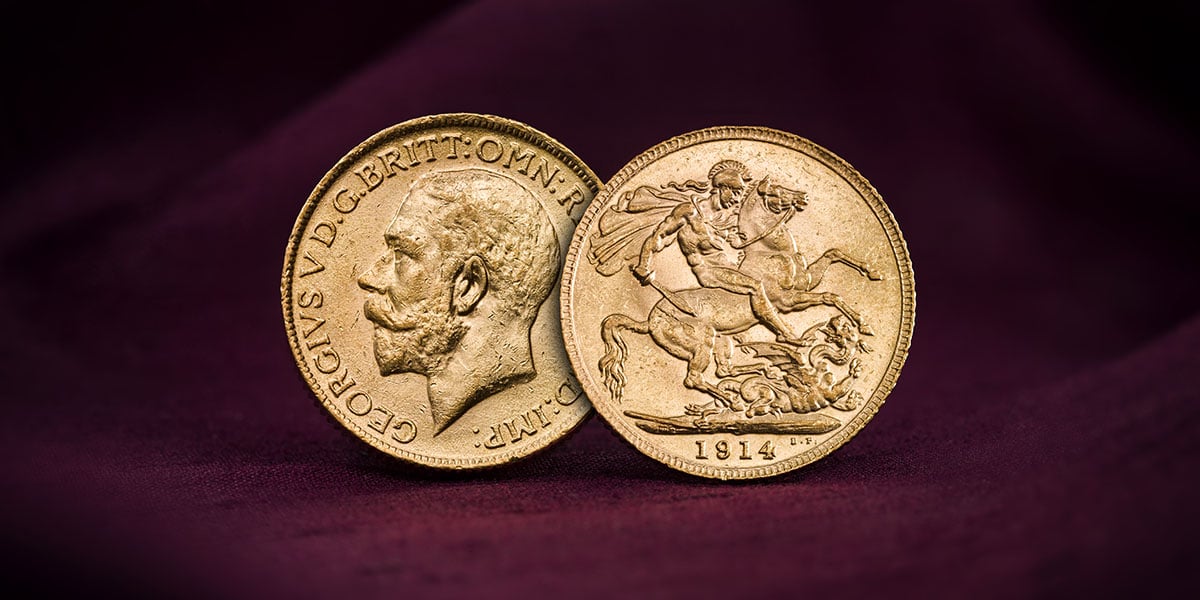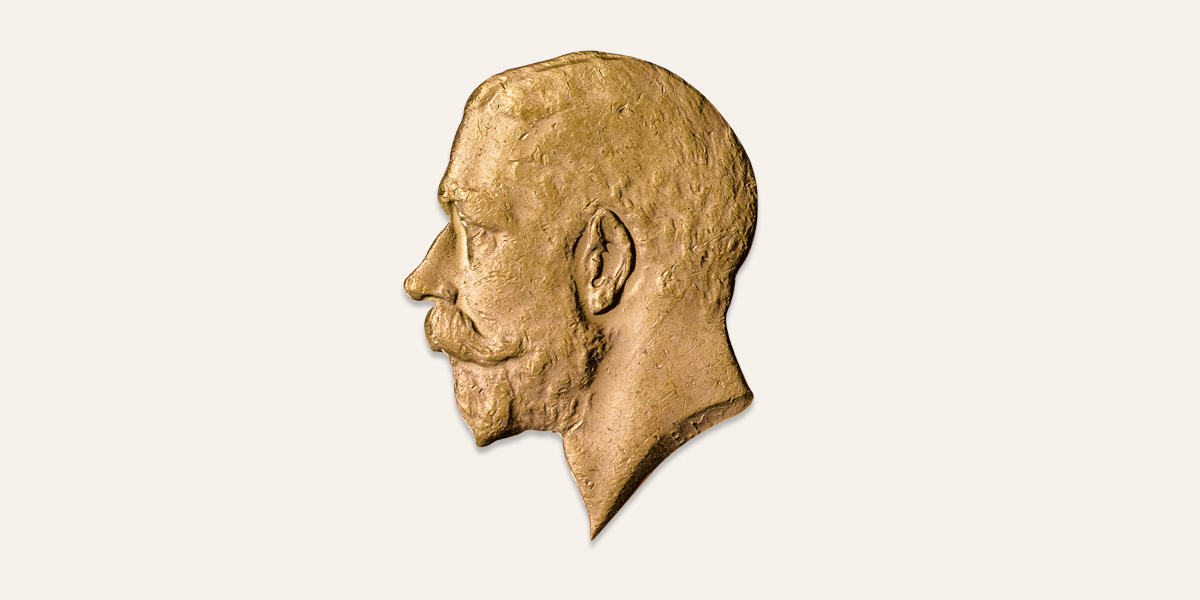More than a century ago, the First World War ravaged the world. The conflict had many lasting effects, which included a drastic change for British currency. The UK Government needed gold to fund the war effort and therefore began to offer banknotes instead of Sovereigns to the public withdrawing cash. Many Sovereigns were struck during the war but they went to the Bank of England to be stored in the gold reserve, rather than issued for circulation. This 1914 George V Sovereign was issued in the same year that war broke out and represents an incredible period of history.
George V served as the British monarch from 6 May 1910 until his death on 20 January 1936. He reigned during a tumultuous period in British and world history that notably included the outbreak of the First World War in 1914. During the conflict, the king made more than 450 visits to troops and more than 300 visits to hospitals to see wounded servicemen. His compassion didn’t just apply to British troops, as he advocated for the merciful treatment of German prisoners-of-war, too.
As well as the brutal ramifications it inflicted on a global scale, the First World War also had a lasting impact on circulating coinage in Britain and served as a catalyst for the end of gold used in British currency.

A Golden Era in British Coinage
Taking its name from the sovereigns first struck in 1489 upon Henry VII’s order for a ‘new money of gold’, the modern Sovereign featured extensively as a circulating coin in Britain during the early nineteenth century. The annual output of gold in the country exceeded £10 million and from 1910, it often exceeded £20 million. Up until the outbreak of the First World War, the total production of Sovereigns and Half-Sovereigns in London and abroad since 1817 totalled £900 million, with the circulation of gold almost £100 million in Britain alone. The outbreak of war marked the beginning of the end for the use of Sovereigns as currency in Britain.
Financing the War Effort
On 28 June 1914, Archduke Franz Ferdinand’s assassination ignited tensions between the European powers, which in turn prompted banks to hoard their gold. In Britain, the Bank of England issued banknotes instead of Sovereigns to those withdrawing cash, in a bid to hoard gold to fund the war effort. Government propaganda also helped dissuade the public from withdrawing gold, as in August 1914, the Chancellor of the Exchequer, David Lloyd George, employed compelling rhetoric to imply that those who sought gold were essentially unpatriotic by depriving the British forces of finances.
The 1914 George V Sovereign
By the summer of 1915, Sovereigns were scarcely seen on the streets of London as a form of payment, with the public having bought into the government’s message and embraced the use of banknotes. However, Sovereigns were still struck during the war but stored by the Bank of England as part of the gold reserve.
Issued in the same year as the outbreak of the First World War, the obverse of the 1914 Sovereign features the coinage portrait of George V created by Australian sculptor Bertram Mackennal in 1910.

The king was an avid admirer of Mackennal’s design talents and actively encouraged his involvement in the commission for the new coinage portrait. However, the portrait was not without technical blemishes as Mackennal modelled the portrait at too high a relief, which created an imbalance and a consequent ghosting effect on some coins. This caused an outline of the effigy to appear on the reverse and served as an example to ensure that future coinage portraits were technically sound before commissioning their final use. Mackennal’s portrait of the king was nevertheless accomplished and well received, which is exemplified by its use on postage stamps and paper money too.
Specification
| Specification | Value |
|---|---|
| Denomination | Sovereign |
| Alloy | 22 Carat Gold |
| Weight | 7.98 g |
| Diameter | 22.05mm |
| Reverse Designer | Bertram Mackennal |
| Specification | Value |
|---|---|
| Obverse Designer | Benedetto Pistrucci |
| Quality | Circulating |
| Year | 1914 |
| Pure Metal Type | Gold |
